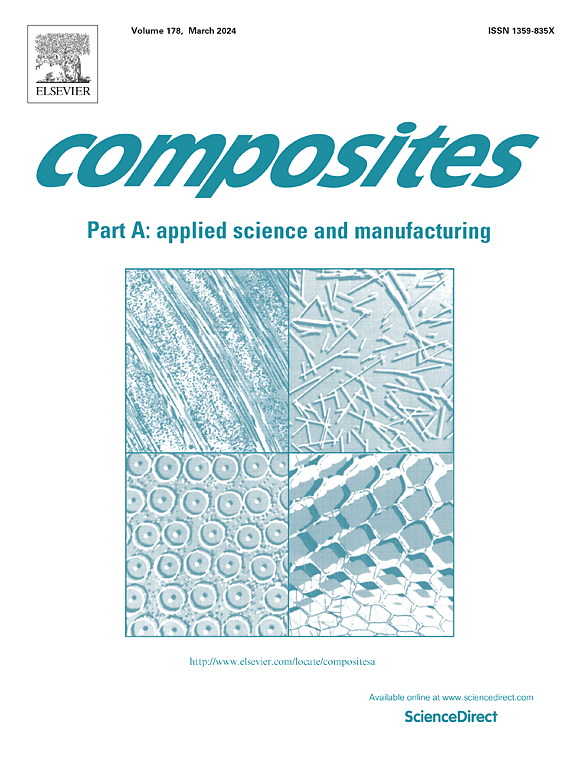Moulding prepreg platelets into high fibre loading fraction carbon fibre-reinforced syntactic epoxy foams
IF 8.1
2区 材料科学
Q1 ENGINEERING, MANUFACTURING
Composites Part A: Applied Science and Manufacturing
Pub Date : 2025-03-22
DOI:10.1016/j.compositesa.2025.108865
引用次数: 0
Abstract
This study presents a novel method for manufacturing high fibre content carbon fibre-reinforced syntactic epoxy foams by moulding prepreg platelets with hollow glass microspheres. The prepreg platelets were either (i) dry-mixed at room temperature or (ii) mixed at cryogenic temperature in liquid nitrogen with hollow glass microspheres prior to compression moulding. This approach achieves a carbon fibre volume fraction of up to 49 %, addressing the limitations of low fibre content in conventional syntactic foams. The resulting materials exhibit enhanced mechanical properties, including a compressive modulus of ∼6 GPa and ∼3.5 GPa in the in-plane and through-thickness directions, respectively. The anisotropy in mechanical properties is attributed to the anisotropic packing of the prepreg platelets. Packing simulations using PyBullet confirmed that microspheres did not disrupt platelet arrangement, maintaining a packing efficiency of ∼63 % while filling inter-platelet gaps. Although cryogenic processing improved the mixing process, its impact on mechanical performance was minimal. This study demonstrates a simple manufacturing approach to produce high performance carbon fibre reinforced porous polymer composites suitable for lightweighting applications.

求助全文
约1分钟内获得全文
求助全文
来源期刊

Composites Part A: Applied Science and Manufacturing
工程技术-材料科学:复合
CiteScore
15.20
自引率
5.70%
发文量
492
审稿时长
30 days
期刊介绍:
Composites Part A: Applied Science and Manufacturing is a comprehensive journal that publishes original research papers, review articles, case studies, short communications, and letters covering various aspects of composite materials science and technology. This includes fibrous and particulate reinforcements in polymeric, metallic, and ceramic matrices, as well as 'natural' composites like wood and biological materials. The journal addresses topics such as properties, design, and manufacture of reinforcing fibers and particles, novel architectures and concepts, multifunctional composites, advancements in fabrication and processing, manufacturing science, process modeling, experimental mechanics, microstructural characterization, interfaces, prediction and measurement of mechanical, physical, and chemical behavior, and performance in service. Additionally, articles on economic and commercial aspects, design, and case studies are welcomed. All submissions undergo rigorous peer review to ensure they contribute significantly and innovatively, maintaining high standards for content and presentation. The editorial team aims to expedite the review process for prompt publication.
 求助内容:
求助内容: 应助结果提醒方式:
应助结果提醒方式:


